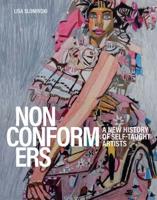Publisher's Synopsis
The penny bank craze of the twentieth century began quietly enough. Here, a slotted pottery pig from Scotland. There, a grimacing human face made in Bennington, Vermont. In 1793, penny banks first appeared in America, along with the first large copper pennies. Those who mistrusted paper currency saved their "hard" money in vessels of pottery, glass, and tin. In the 1890s, "China Pig" with a slit in his back sold for a dime. Plump pigs and pennies went together like thrift and future success. To this day, these iconic examples of American folk art and vernacular design are prized additions to museum and personal collections throughout the country. Money in the Bank details a wide range of extraordinary still and mechanical banks acquired by Katherine Kierland Herberger, who initially discovered the pleasure and variety of toy banks as gifts for her son. Over 1,200 purchases later, she donated the collection to The Minneapolis Institute of Arts. All are pictured here in full color for the first time. Acclaimed art historian Karal Ann Marling contributes an essay to the book tracing the importance of banks in popular culture, and an introduction narrates Herberger's extensive collecting activities. Money in the Bank is a lavishly illustrated and remarkably comprehensive catalog that demonstrates the charm and whimsy, as well as the significance, of toy banks in America. Corine Wegener is assistant curator at The Minneapolis Institute of Arts. Karal Ann Marling is professor of American studies and art history at the University of Minnesota. Distributed for The Minneapolis Institute of Arts



